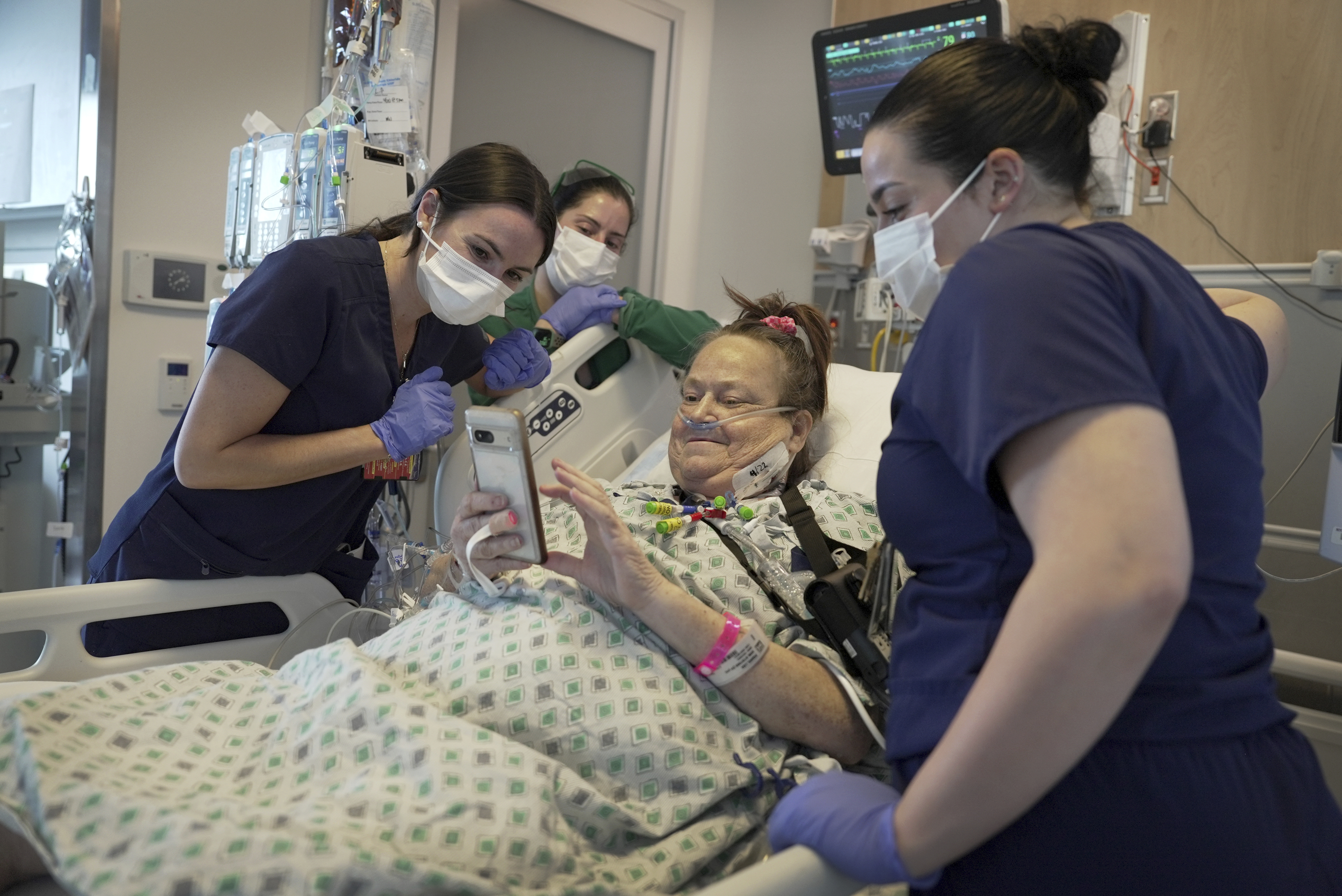Thanks to the advances made in joint replacement surgery, it's more likely that grandpa's knee or grandma's hip is made of plastic. More and more older adults with arthritis, and even some younger ones, are choosing to replace their worn-out joints with plastic, metal or even ceramic ones.
Hip and knee replacements are the most common joint replacement surgeries. About 300,000 total knee replacement surgeries and approximately 200,000 total hip replacements are performed annually in the United States. Surgeons can also replace other joints, such as the ankle, foot, shoulder, elbow and fingers.
Below, Dr. Joseph D. Zuckerman, professor and chairman of the department of orthopedic surgery at the New York University-Hospital for Joint Diseases, discusses how these surgeries are performed and what factors contribute to their success.
How are joints usually damaged?
The reason that people undergo hip and knee replacement in this country is because of the development of arthritis. Arthritis is basically a loss of the smooth joint surfaces that leads to a progressive degeneration of the joint. Now what causes the arthritis can be variable. "I think everybody is familiar with osteoarthritis, which tends to occur over time and affect people as they get older," says Zuckerman. "But the cause can be rheumatoid arthritis, which is a more complex condition that affects multiple joints and occurs in younger people and can get worse as they get older."
There are certain types of rheumatoid arthritis that can affect adolescents. Or people can get rheumatoid arthritis in their 20s, 30s or 40s and have fairly rapid degeneration of joints. If you have arthritis as an adolescent or young adult, you are more likely to have problems later on that may require joint replacement.
Then there are traumatic conditions or injuries to the joints, which can also cause a more rapid development of arthritis. That's referred to as post-traumatic arthritis.
"Arthritis can result from multiple other causes," says Zuckerman, "but they tend to be less common than these three."
Health
What are the most commonly replaced joints?
Hips and knees are the most commonly replaced. Shoulder replacement is probably the third most common. Elbow replacement is less common. But, more recently, there has been a rise in the number of ankle replacements performed.
At what point should someone consider doing replacement?
Joint replacement is considered when the various methods to treat the arthritis that don't require surgery are no longer effective. In other words, when the patient's pain and disability has progressed to the point where there is no other simpler way to improve this situation. Patients will usually consult with several doctors including their rheumatologist or primary care physician and their orthopedic surgeon.
What are the other treatments for severe joint pain?
In general, it's treatments like physical therapy and medication such as aspirin or other anti-inflammatory medications. Sometimes there are specific medications for rheumatoid arthritis that are effective. Sometimes injections into the joints of different types of medications like steroids or newer agents, such as artificial joint fluid or joint lubricants, can be effective in less advanced stages of arthritis.
Even things like using a cane or a crutch or modifying your activities can decrease the symptoms associated with joint problems.
What are the consequences of not having joint replacement?
It's important to point out that joint replacement for arthritis is an elective procedure. If you don't have the surgical treatment, chances are over time it's going to continue to become more painful and you'll become progressively more disabled. If it's only one hip or knee that bothers you, then you still may be able to get around with some assistive devices like a cane or a crutch. "But if both knees or hips are involved," says Zuckerman, "then you can imagine how disabling and crippling it could be."
Who is usually considered a good candidate?
The best candidate is somebody with arthritis that has not responded to other treatment measures and in reasonably good health. The best candidates are those who can participate in the recovery plan after surgery because these operations are only successful if you participate in the exercise regimen.
What does replacement surgery involve?
Any type of joint replacement consists of removing the worn-out surfaces and replacing them with artificial surfaces. So with hip replacement, worn-out surfaces of bone and cartilage are replaced with surfaces that now articulate contact with each other in a very smooth way. "It's not as good as a normally functioning joint," says Zuckerman, "but it's pretty close and it's better than any arthritic joint."
How often is a second surgery for required?
That's what's called revision surgery and it's done when the components have either worn out or loosened. It occurs in a small percentage of patients usually over time. The more years that pass from the time the hip or knee replacement was put in, the greater the risk that it may loosen or have to be redone. But 95 percent of joint replacements are probably functioning very well for at least 15 years, and at least 90 percent function for 15 to 20 years.
What does recovery involve?
In the hospital there is physical therapy. Sometimes, afterwards, patients need more in-depth rehabilitation that requires a stay in a rehabilitation center to maximize their recovery. Once home, they generally have therapy at home for the first four to six weeks. After six weeks, they usually will begin an outpatient therapy program. Some people need more than six weeks, but others need less. Everybody recovers at a slightly different rate.
"I usually tell patients to expect to get 80 percent of their recovery within the first 10 to 12 weeks after surgery," says Zuckerman. The remaining 20 percent may take another three to six months because it's kind of the fine-tuning of the recovery.
How can patients prepare for the surgery in advance?
If the patient's weight loss will have a positive impact on their surgery, then doctors do encourage them to do that. For many of these patients it's very hard to lose weight because they are so inactive, they're so disabled. But they need a comprehensive medical evaluation before surgery to make sure that any medical problems are identified or those that they know about are well controlled.
How can people prepare their homes for life right after surgery?
There has to be a discussion prior to surgery about what they can expect when they come home. People who live in a two-floor houses or apartments may want to consider having a bed on the main floor for the first few weeks so they don't have to go up and down every day. Although they can walk stairs, it should be done sparingly.
They also have to think about how they are going to take care of their responsibilities at home. They're not going to be running out to the store to shop or do their banking, so they need a good supportive network.
Are complications with this surgery common?
There are complications such as infection that can occur with any surgery. What's good about hip and knee replacement is the rate of serious complications is probably on the order of 2 or 3 percent. Even though 95 or 98 percent of the time, there are no complications, patients need to be aware of the potential for complications before the surgery so they can make an informed decision about how they would like to proceed.
What activities do people need to be cautious about after joint replacement surgery?
There are certain things doctors don't want patients to do after joint replacement so they can maintain their overall function. "The things that I worry about are repetitive impact activities: running, jogging," says Zuckerman. "I do have patients who play tennis afterwards, usually doubles, because there is less running involved, but they need to be careful."
Do you think that there are any common misconceptions about joint replacement?
"I think there are some misconceptions that only older people can have this surgery," says Zuckerman. If somebody has significant arthritis at the age of 46, being told by a physician, "You have to wait until you're 60," is unjust punishment for a patient who is already disabled. The potential problem in joint replacement in people who are in their 40s is that if they live into their 80s, it may have to be redone. But for many that's a fair trade for the quality of life improvement that results from having a joint replacement during the prime of their life.



